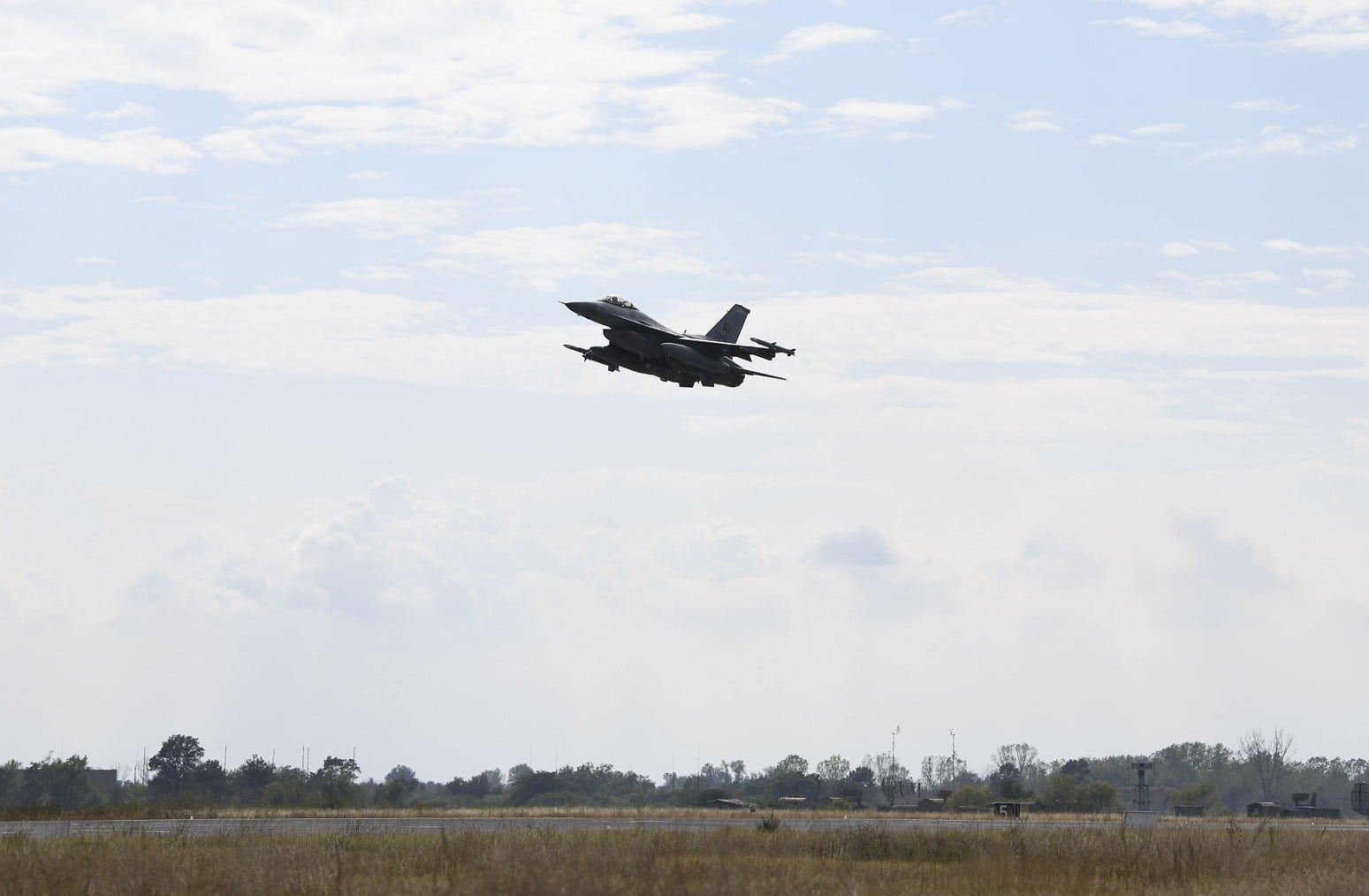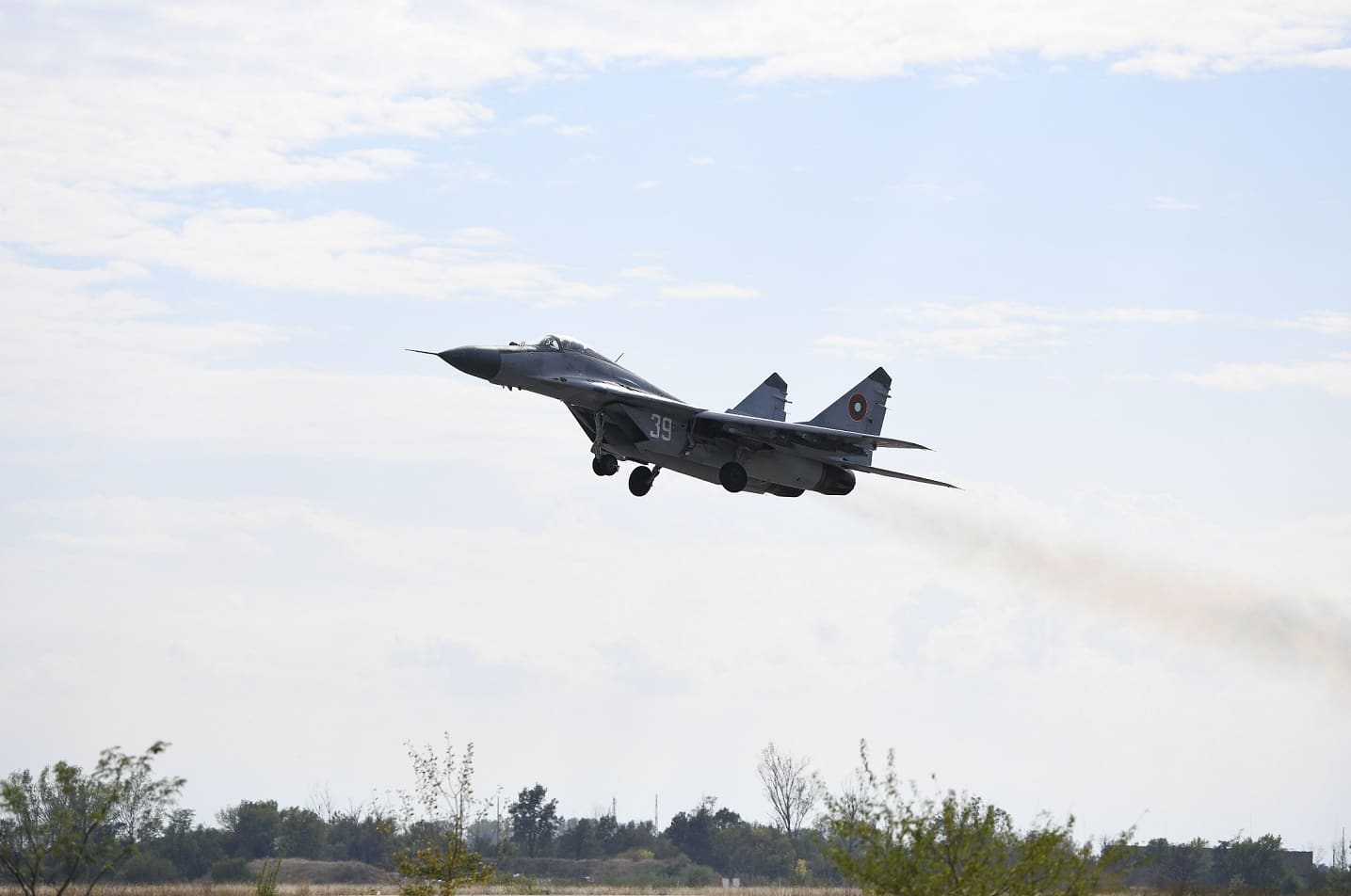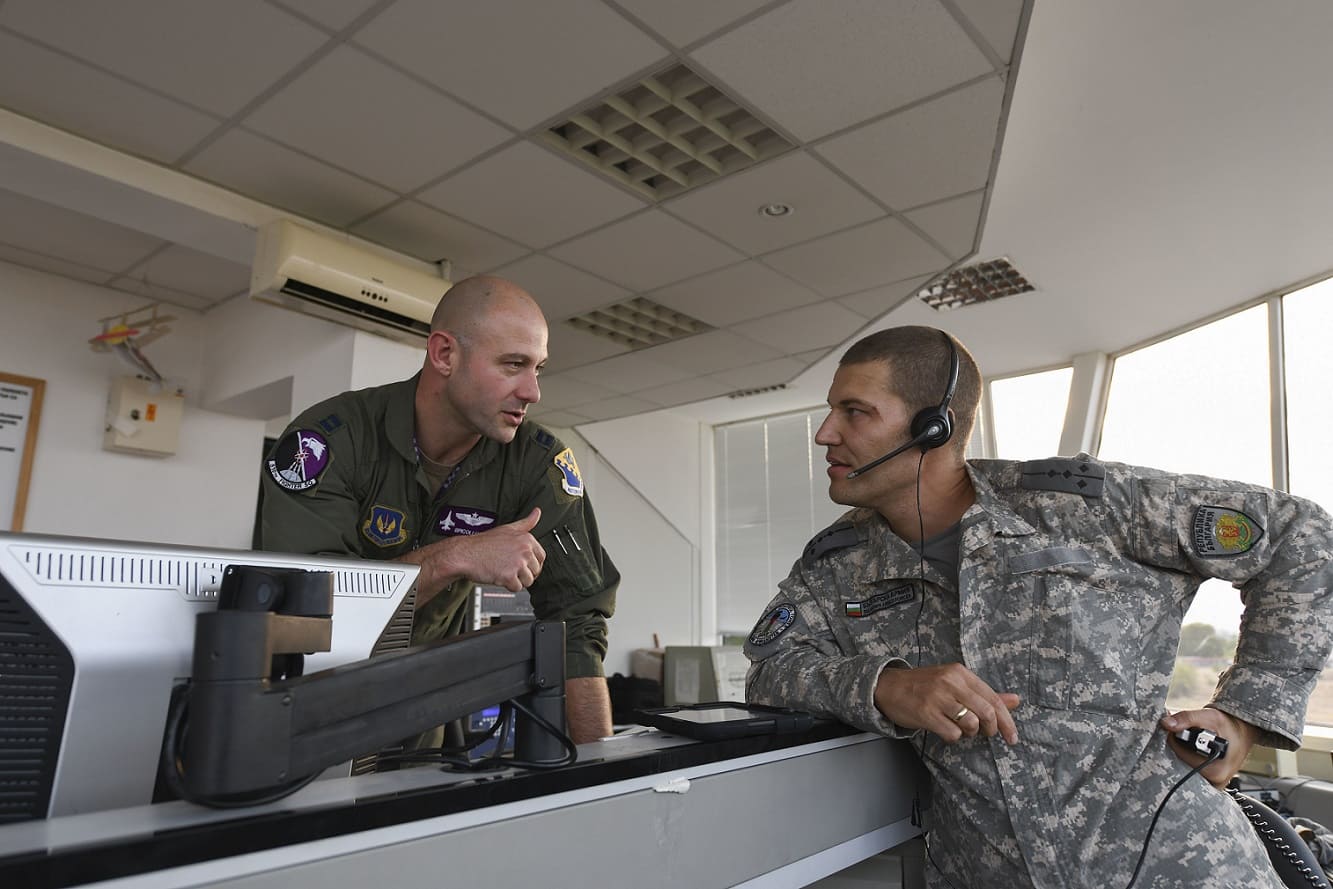U.S. Air Force F-16s conducted air-to-air training with Bulgarian MiG-29 fighters
Posted on
U.S. Air Force Airmen and F-16 Fighting Falcons assigned to the 31st Fighter Wing participated in the bilateral training exercise, Rapid Buzzard, with the Bulgarian Air Force, according to a recent service news release.
F-16 Fighting Falcons executed a rapid deployment to Graf Ignatievo Air Base, Bulgaria to conduct “hot pit” refueling and participate in the air-to-air training with Bulgarian MiG-29 fighter jets.
Refueling operations were conducted with the 435th Contingency Response Squadron and three C-130J Super Hercules assigned to the 37th Airlift Squadron, 86th Airlift Wing, Ramstein Air Base, Germany, which provided the fuel through rapid defuel operations from the C-130s into an R-11 fuel truck.
Airmen from the 435th CRS trained and executed the “hot pit” refueling, when engines are running during the refueling process, with Airmen from the 31st FW.
“Working with the 435th CRS was a great opportunity for us,” said Senior Airman Khari Coleman, 31st Aircraft Maintenance Squadron, 510th Aircraft Maintenance Unit crew chief. “Getting them familiarized with F-16 ‘hot pit’ operations went smoothly, resulting in a fast refueling operation.”
The 510th Fighter Squadron also conducted air-to-air training with Bulgarian MiG-29s and air-to-surface training with Bulgarian Air Defense assets.
The MiG-29 is a living legend from Soviet-era and backbone of many air forces, include Bulgaria. The Mikoyan MiG-29 is a twin-engine jet fighter aircraft designed in the Soviet Union. Developed by the Mikoyan design bureau as an air superiority fighter during the 1970s, the MiG-29, along with the larger Sukhoi Su-27, was developed to counter new U.S. fighters such as the McDonnell Douglas F-15 Eagle and the General Dynamics F-16 Fighting Falcon.
These bilateral training exercises and deployments are designed to enhance partner interoperability, maintain joint readiness, assure U.S. regional allies, and enhance the U.S. Air Force’s ability to rapidly deploy to remote locations and take command and control of the region.
“It’s one thing to takeoff from Texas and land in Oklahoma,” said Lt. Col. Daniel Lindsey, 510th FS commander. “It’s another thing to takeoff from Italy and land in Bulgaria. There are different accents, different process procedures, different airfield capabilities… we spent a lot of time coordinating. Our aircraft may operate differently from the Bulgarian Air Force’s aircraft, but we were on the same page when we conducted the training, and both sides received valuable training.”
With exercises such as Rapid Buzzard, both U.S. Air Force Airmen and Bulgarian forces are able to extend joint warfighting capability through operational and tactical training. Successful partnering activities like this result in progressive relationships and lead to tangible, mutual benefits during peacetime, contingencies and crises, through actions such as regional security, access and coalition operations.
“The support at every level from the Bulgarian Air Force and more specifically, the team here at Graf Ignatievo, were instrumental in the success of our exercise,” said Capt. Rollie Flint, 510th FS assistant director of operations. “From logistics to maintenance, to pilots and air traffic control, everyone was intent on ensuring we met our training objectives and furthering the bilateral partnership we’ve established. Through continued opportunities like this, the 510th FS is able to agilely project power and assure our North Atlantic Treaty Organization partners as the world’s most combat-capable fighter squadron.”
This exercise required all levels of a squadron to deploy small teams of Airmen and aircraft for a short amount of time to hone their skills. Exercises like this enhance abilities to rapidly deploy to any remote location, take command and control of the region and deliver airpower lethality more effectively and efficiently anywhere in the world.



Subscribe to our newsletter
Promotions, new products and sales. Directly to your inbox.
